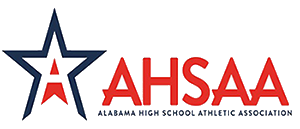What two players collide or a player gets hit in the head, and naturally, they start holding their head, the referees need to immediately stop play and assess the situation — there may be a concussed player.
If the referee observes any player exhibiting signs, symptoms or behaviors consistent with a concussion, he or she shall immediately remove that player from the contest and the player shall not return to play. The referee shall inform the head coach of this decision and verify the name of the player so that he/she can include accurate information in the post-game report to the assignor.
What should I do during the game if I think a player may have a concussion?
You must stop play and have the team to substitute the player from the game. Afterwards, inform the coach what you observed with the player and make sure to confirm the player’s name and number so you can have the information for the assignor.
What should I do after the game if I thought a player may have sustained a concussion during the game?
Report the information to the center referee (if you were an AR), or if you were the center referee, to the assignor.
What if the school has a trainer on-site?
The 2020-21 NFHS rule-book explicitly states: “Any player who exhibits signs, symptoms or behaviors consistent with a concussion (such as loss of consciousness, headache, dizziness, confusion, or balance problems) shall be immediately removed from the contest and shall not return to play until cleared by an appropriate health-care professional” (3.3.2.b.3).
The trainer on site can confirm if a player is concussed and if that is the case, AHSAA states:
Any health care professional or AHSAA certified coach may identify concussive signs, symptoms or behaviors of a student athlete during any type of athletic activity. Once concussive signs are identified, only a medical doctor can clear the athlete to return to play.
What are the “signs, symptoms or behaviors consistent with a concussion”?
According to the 2020-21 NFHS Soccer Rules Book common signs/symptoms/behaviors of a concussion are:
- Dazed or stunned appearance
- Confusion about assignment or position
- Forgetful, for example, doesn’t follow instructions
- Uncertainty of game, score or opponent
- Clumsy movements
- Slow response to questions
- Mood, behavior or personality changes
- Inability to recall events prior to hit or fall
- Inability to recall events after hit or fall
- Balance problems or dizziness
- Double or blurry vision
- Sensitivity to light or noise
- Feeling sluggish, hazy, foggy or groggy
- Concentration or memory problems
- Emotions of “not feeling right” or “feeling down”
Activate the Emergency Medical System (AED) or call 9-1-1, if after a bump, blow, or jolt to the head or body, a player has one or more of these danger signs (per 2020-21 NFHS Soccer Rules Book):
- One pupil larger than the other;
- Drowsiness or inability to wake up;
- A headache that gets worse and does not go away;
- Slurred speech, weakness, numbness, or decreased coordination
- Repeated vomiting or nausea;
- Convulsions or seizures (shaking or twitching);
- Unusual behavior, increased confusion, restlessness, or agitation;
- Loss of consciousness (passed out/knocked out); even if for a brief time;

